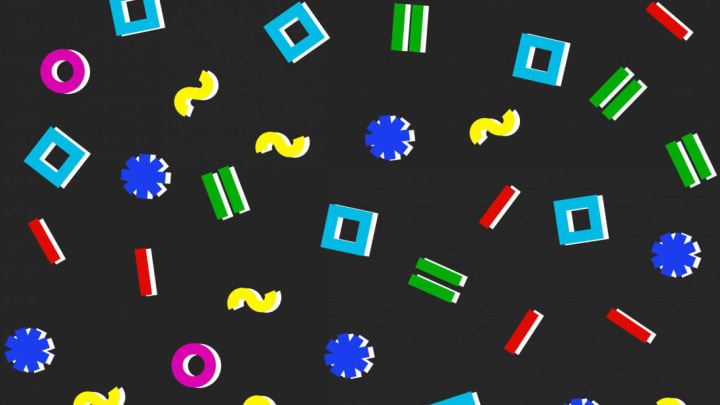You may have never heard of a pattern called "The Odyssey," but if you frequented movie theaters in the 1990s, you've likely seen it. The print featured popping colors and cosmic shapes against a dark background, and it first appeared in AMC multiplexes in 1997. Though some cinephiles may view the playful design with nostalgia, its true purpose isn't exactly heart-warming.
As Foster Kramer reports for A24's blog, the introduction of The Odyssey coincided with a boom in movie-going. Blockbuster spectacles like Jurassic Park (1993) and Independence Day (1996) had viewers flocking to the cinema, and the record-breaking success of Titanic (1997) was about to change the industry forever. AMC wanted its theaters to feel as big and exciting as the movies themselves. Additionally, they wanted a way to hide the bigger messes that came with larger audiences. A zany, galaxy-print carpet accomplished both tasks.
The pattern was intentionally designed to obscure soda stains, spilled popcorn, loose candy, and anything else that might end up on the floor during a movie's run time. To test the carpets, manufacturers poured Coke on them and let it absorb. When the material didn't change color, they knew the design was a success.
After The Odyssey rolled out in AMC theaters, other cinemas adopted similar carpets of their own. Instead of a space theme, the designs sometimes consisted of cartoon film reels, buckets of popcorn, or abstract squiggles. In each case, they featured a busy, colorful pattern against a dark background to hide every type of mess.
Like Butterfinger BBs and mid-budget movies, these carpets have virtually disappeared from theaters. By the mid-2000s, cinema seats had gotten larger and theaters became less crowded, which helped with cleanliness issues. Aesthetic tastes had also shifted. Moviegoers still enjoy spectacle, but today they prefer it to be confined to the screen.
[h/t A24Films.com]
